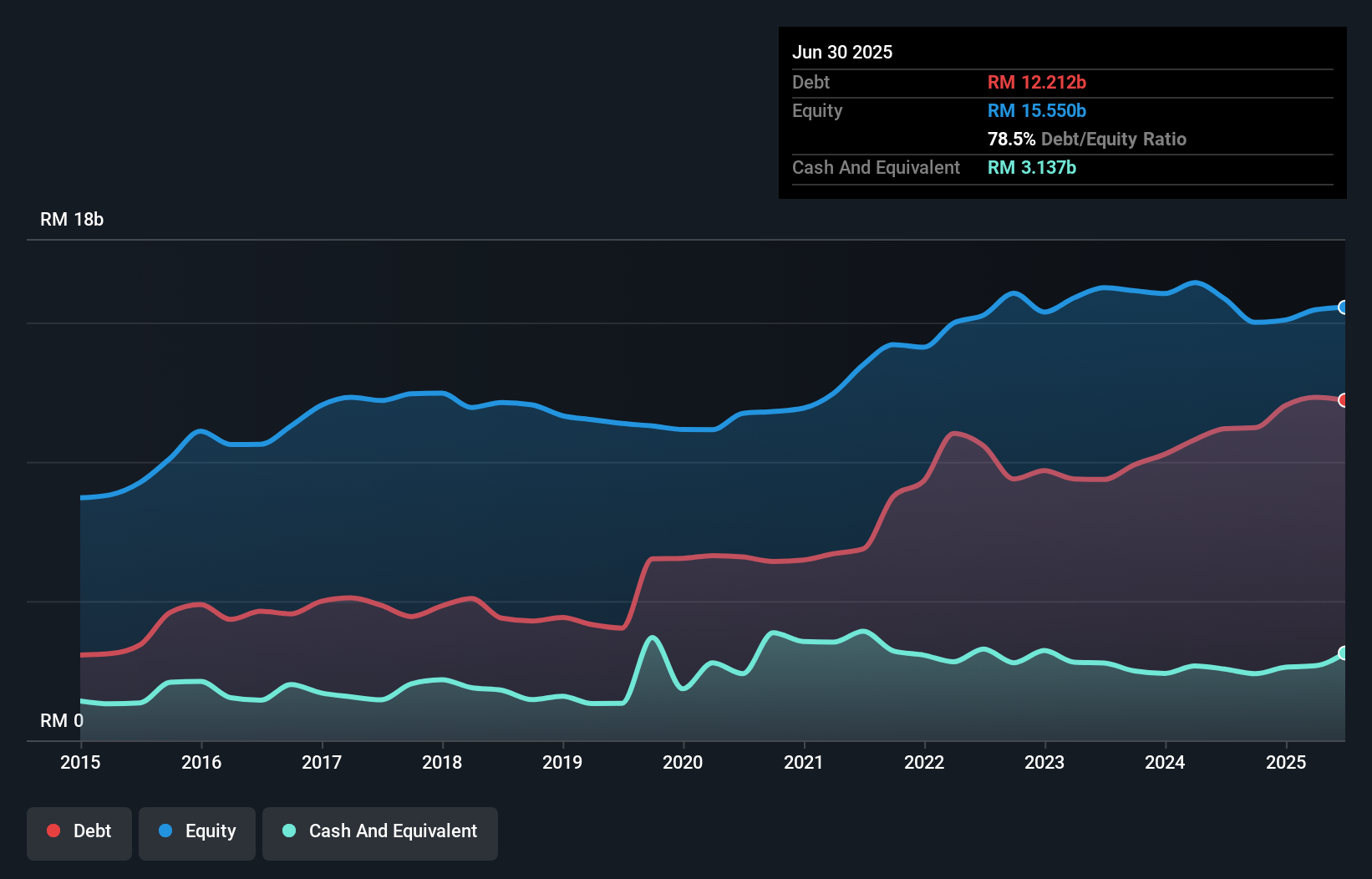These 4 Measures Indicate That Kuala Lumpur Kepong Berhad (KLSE:KLK) Is Using Debt Extensively
David Iben put it well when he said, 'Volatility is not a risk we care about. What we care about is avoiding the permanent loss of capital.' It's only natural to consider a company's balance sheet when you examine how risky it is, since debt is often involved when a business collapses. As with many other companies Kuala Lumpur Kepong Berhad (KLSE:KLK) makes use of debt. But should shareholders be worried about its use of debt?
When Is Debt Dangerous?
Debt assists a business until the business has trouble paying it off, either with new capital or with free cash flow. Ultimately, if the company can't fulfill its legal obligations to repay debt, shareholders could walk away with nothing. However, a more common (but still painful) scenario is that it has to raise new equity capital at a low price, thus permanently diluting shareholders. By replacing dilution, though, debt can be an extremely good tool for businesses that need capital to invest in growth at high rates of return. The first step when considering a company's debt levels is to consider its cash and debt together.
What Is Kuala Lumpur Kepong Berhad's Debt?
As you can see below, at the end of June 2025, Kuala Lumpur Kepong Berhad had RM12.2b of debt, up from RM11.2b a year ago. Click the image for more detail. However, it also had RM3.14b in cash, and so its net debt is RM9.08b.

How Strong Is Kuala Lumpur Kepong Berhad's Balance Sheet?
According to the last reported balance sheet, Kuala Lumpur Kepong Berhad had liabilities of RM9.02b due within 12 months, and liabilities of RM7.97b due beyond 12 months. Offsetting these obligations, it had cash of RM3.14b as well as receivables valued at RM3.97b due within 12 months. So its liabilities total RM9.88b more than the combination of its cash and short-term receivables.
While this might seem like a lot, it is not so bad since Kuala Lumpur Kepong Berhad has a market capitalization of RM23.3b, and so it could probably strengthen its balance sheet by raising capital if it needed to. But we definitely want to keep our eyes open to indications that its debt is bringing too much risk.
Check out our latest analysis for Kuala Lumpur Kepong Berhad
We use two main ratios to inform us about debt levels relative to earnings. The first is net debt divided by earnings before interest, tax, depreciation, and amortization (EBITDA), while the second is how many times its earnings before interest and tax (EBIT) covers its interest expense (or its interest cover, for short). Thus we consider debt relative to earnings both with and without depreciation and amortization expenses.
Kuala Lumpur Kepong Berhad's debt is 3.0 times its EBITDA, and its EBIT cover its interest expense 4.1 times over. This suggests that while the debt levels are significant, we'd stop short of calling them problematic. On a slightly more positive note, Kuala Lumpur Kepong Berhad grew its EBIT at 18% over the last year, further increasing its ability to manage debt. When analysing debt levels, the balance sheet is the obvious place to start. But ultimately the future profitability of the business will decide if Kuala Lumpur Kepong Berhad can strengthen its balance sheet over time. So if you want to see what the professionals think, you might find this free report on analyst profit forecasts to be interesting.
Finally, a company can only pay off debt with cold hard cash, not accounting profits. So we clearly need to look at whether that EBIT is leading to corresponding free cash flow. Looking at the most recent three years, Kuala Lumpur Kepong Berhad recorded free cash flow of 25% of its EBIT, which is weaker than we'd expect. That's not great, when it comes to paying down debt.
Our View
Kuala Lumpur Kepong Berhad's conversion of EBIT to free cash flow and net debt to EBITDA definitely weigh on it, in our esteem. But it seems to be able to grow its EBIT without much trouble. We think that Kuala Lumpur Kepong Berhad's debt does make it a bit risky, after considering the aforementioned data points together. Not all risk is bad, as it can boost share price returns if it pays off, but this debt risk is worth keeping in mind. There's no doubt that we learn most about debt from the balance sheet. But ultimately, every company can contain risks that exist outside of the balance sheet. Be aware that Kuala Lumpur Kepong Berhad is showing 2 warning signs in our investment analysis , you should know about...
If, after all that, you're more interested in a fast growing company with a rock-solid balance sheet, then check out our list of net cash growth stocks without delay.
Valuation is complex, but we're here to simplify it.
Discover if Kuala Lumpur Kepong Berhad might be undervalued or overvalued with our detailed analysis, featuring fair value estimates, potential risks, dividends, insider trades, and its financial condition.
Access Free AnalysisHave feedback on this article? Concerned about the content? Get in touch with us directly. Alternatively, email editorial-team (at) simplywallst.com.
This article by Simply Wall St is general in nature. We provide commentary based on historical data and analyst forecasts only using an unbiased methodology and our articles are not intended to be financial advice. It does not constitute a recommendation to buy or sell any stock, and does not take account of your objectives, or your financial situation. We aim to bring you long-term focused analysis driven by fundamental data. Note that our analysis may not factor in the latest price-sensitive company announcements or qualitative material. Simply Wall St has no position in any stocks mentioned.
About KLSE:KLK
Kuala Lumpur Kepong Berhad
Engages in the plantation, manufacturing, and property development businesses.
Mediocre balance sheet with limited growth.
Similar Companies
Market Insights
Community Narratives



